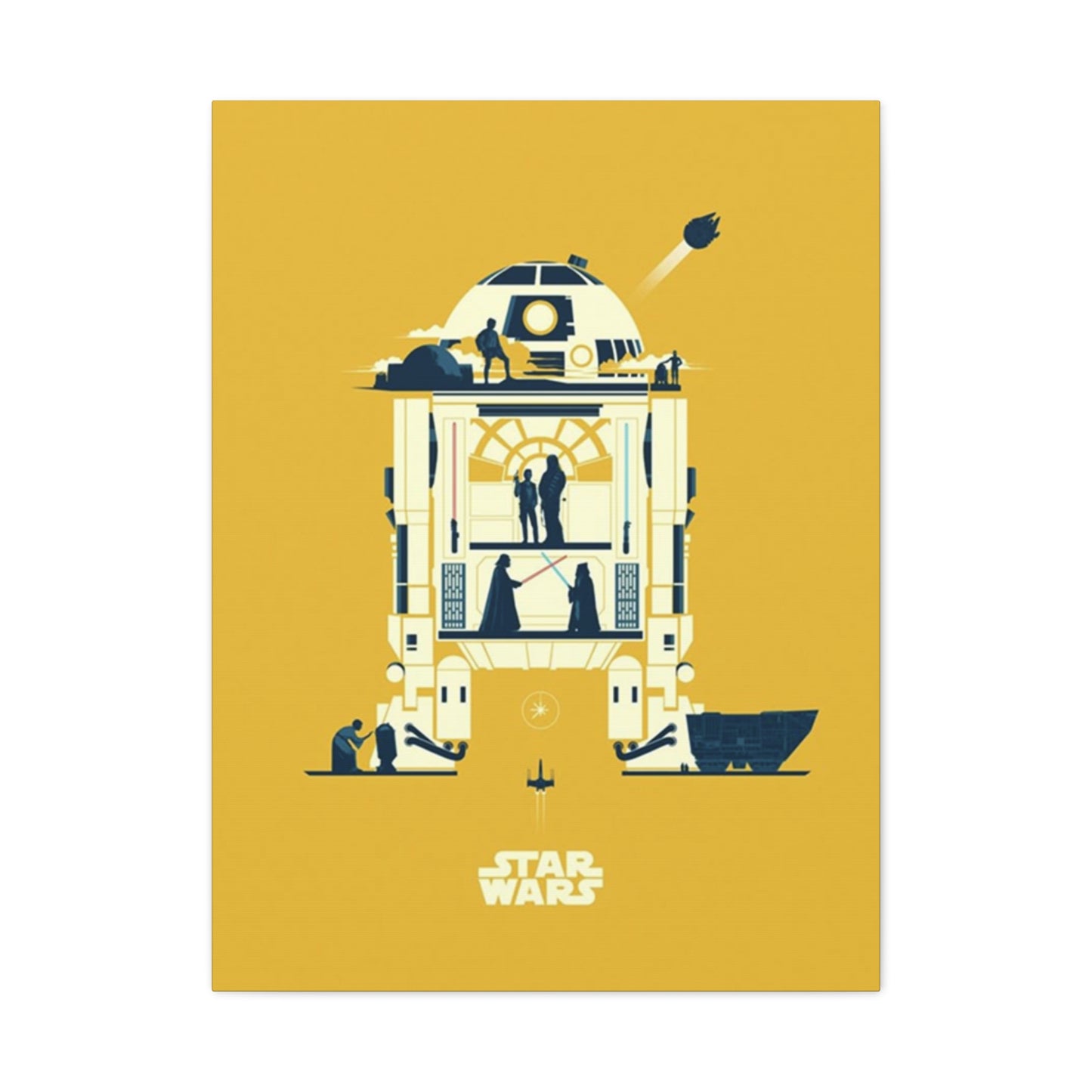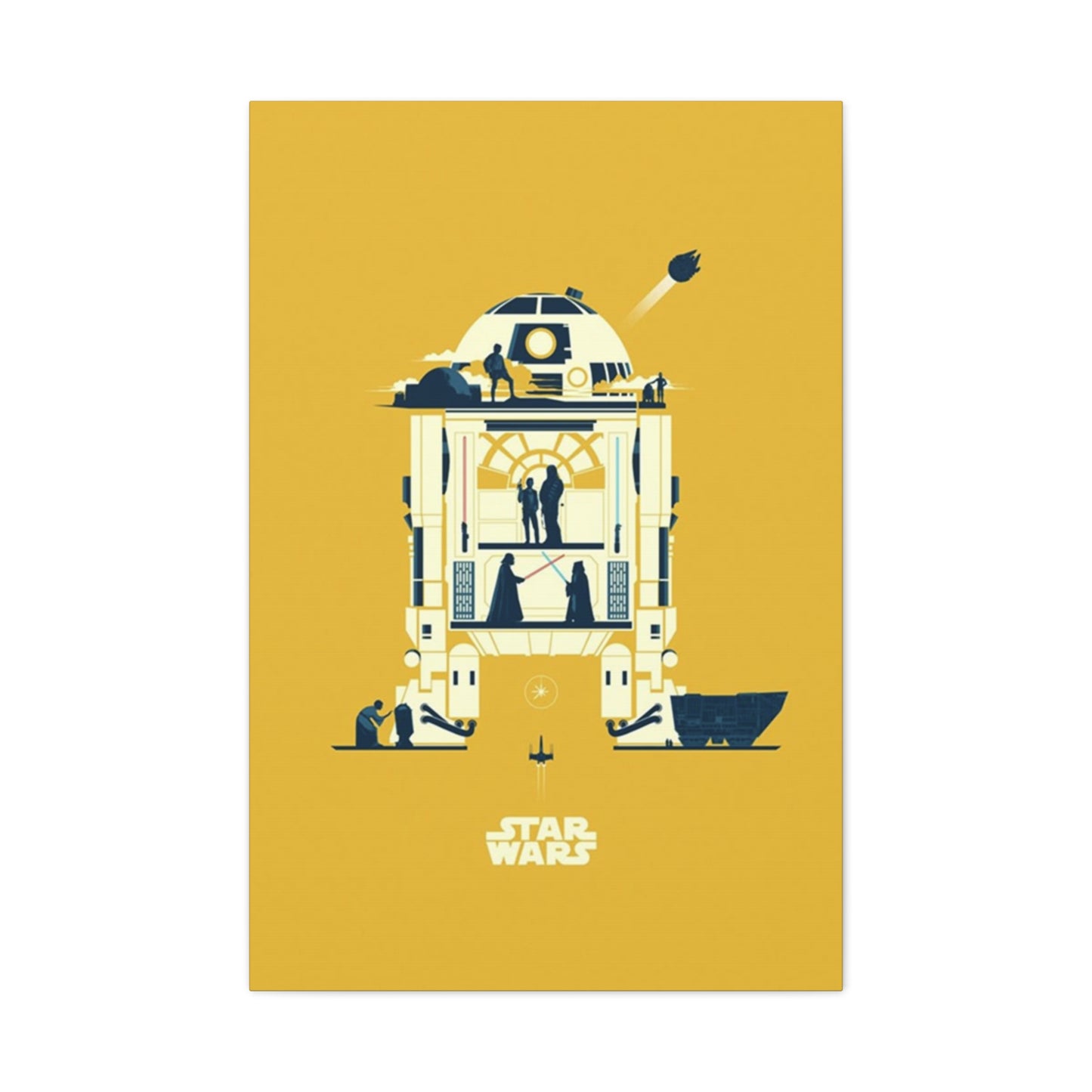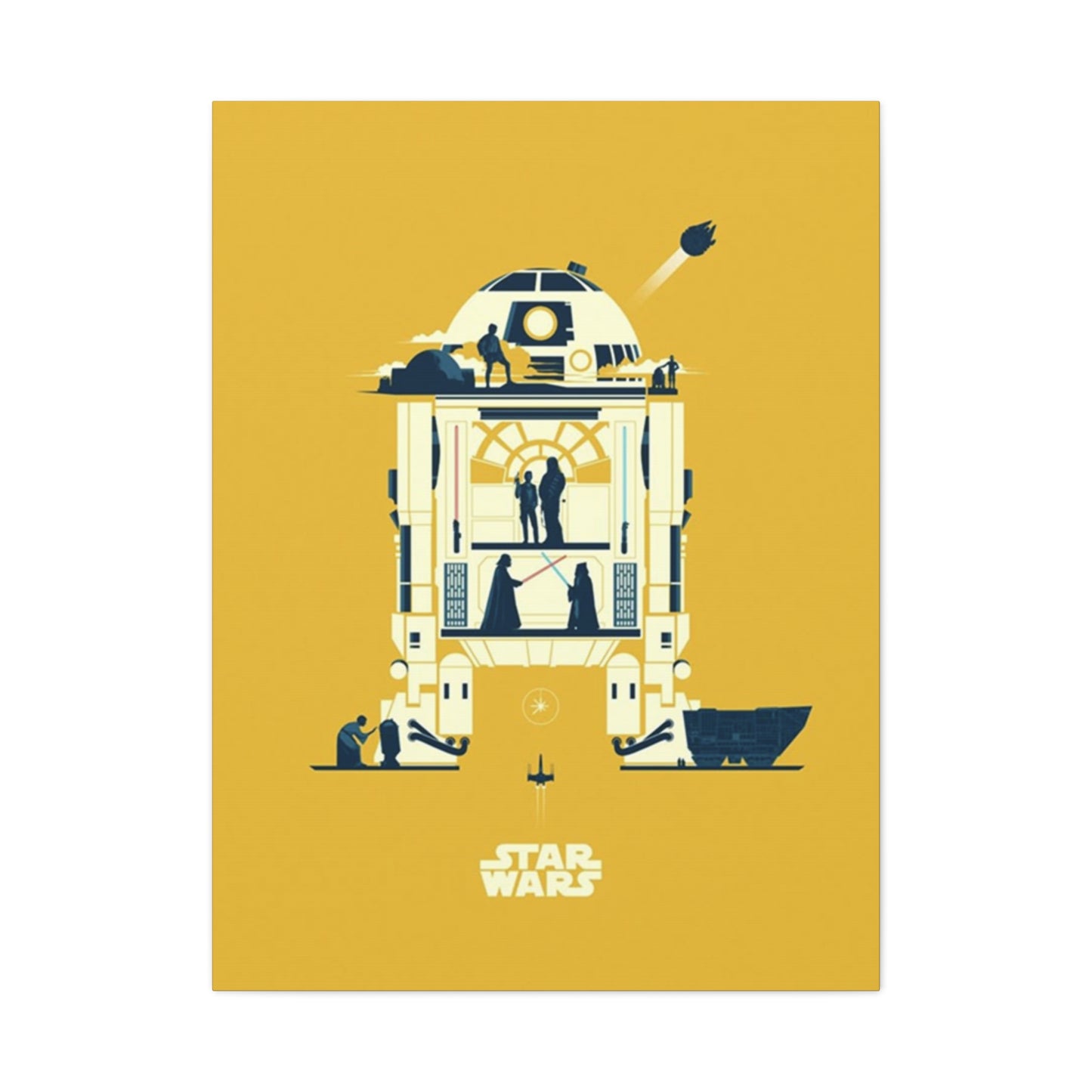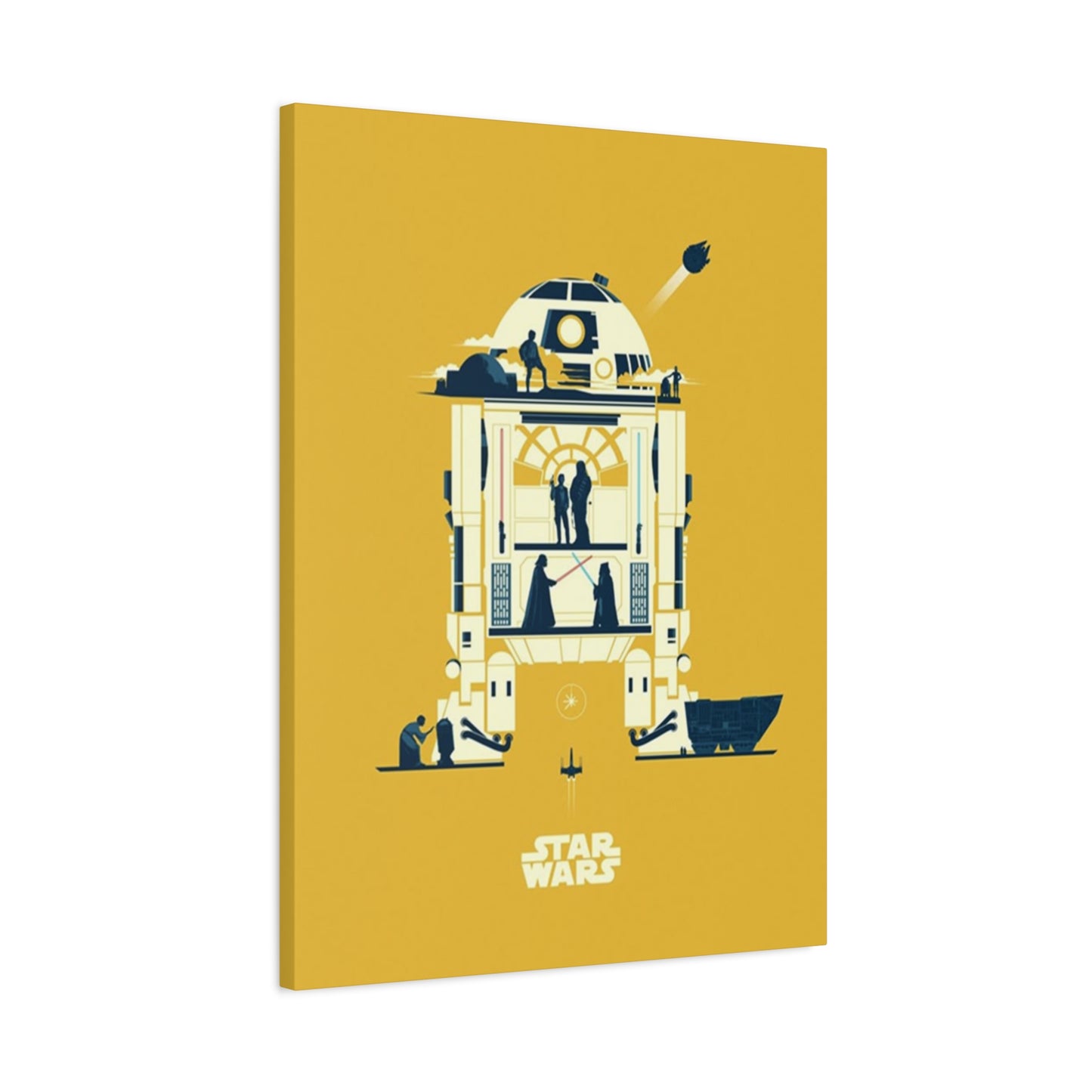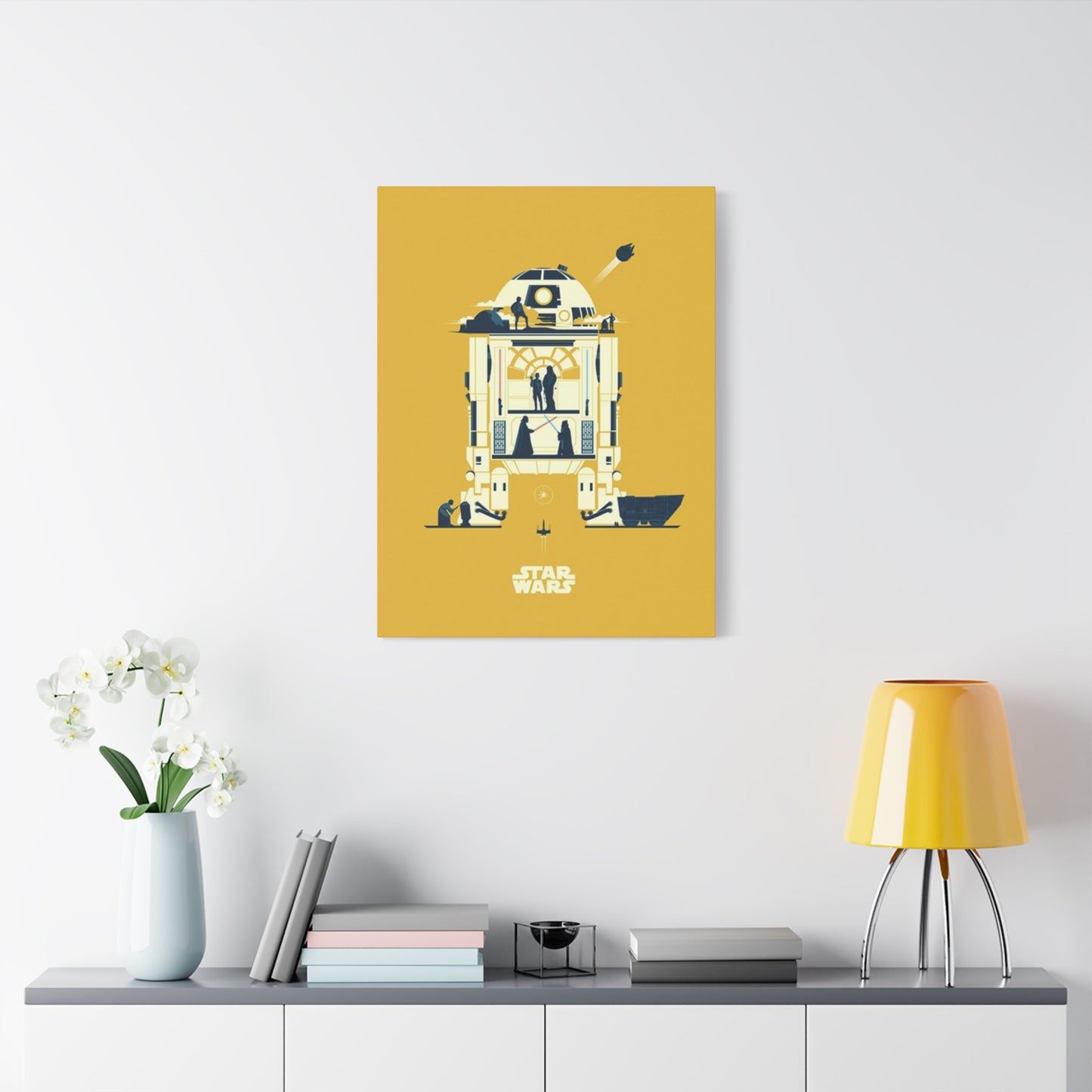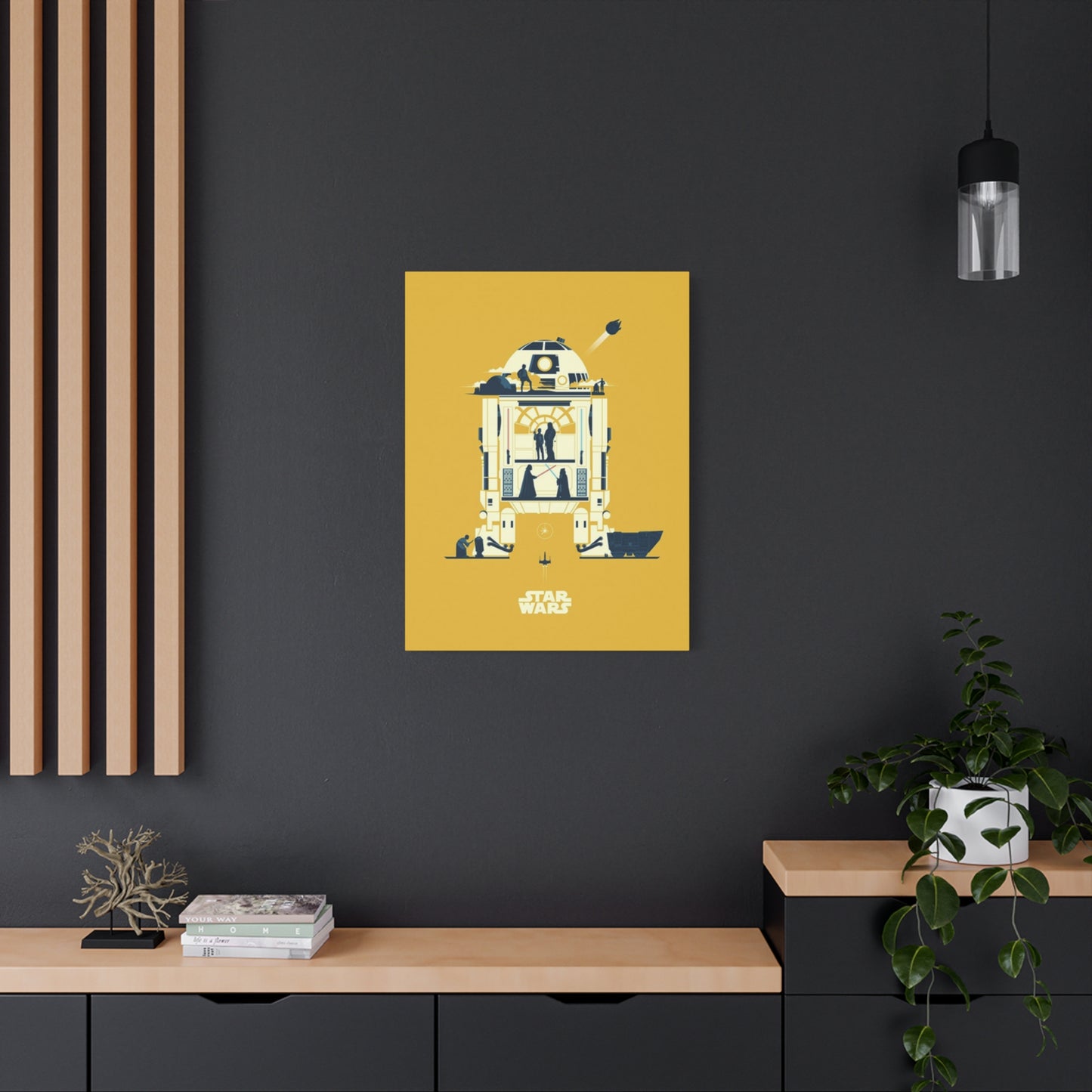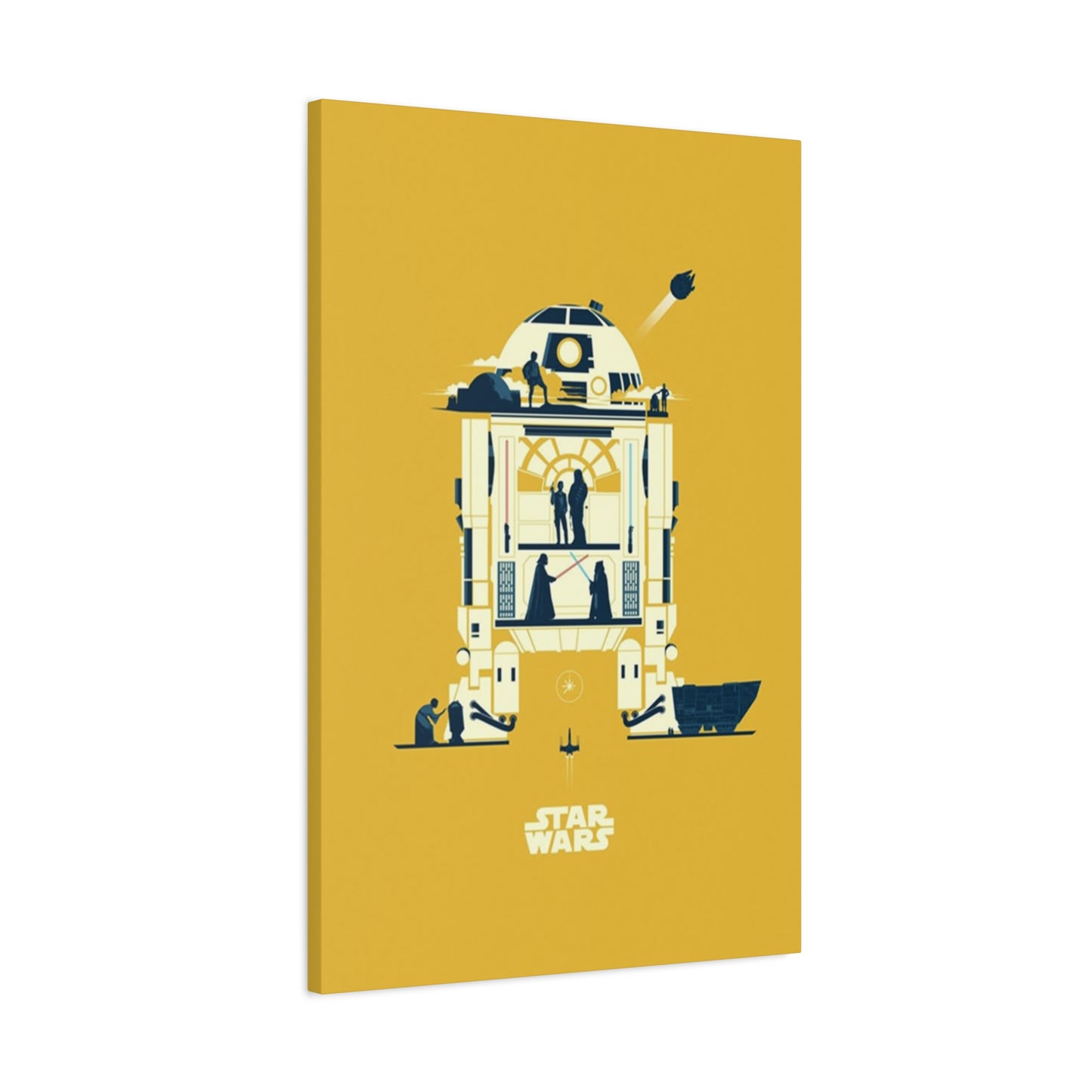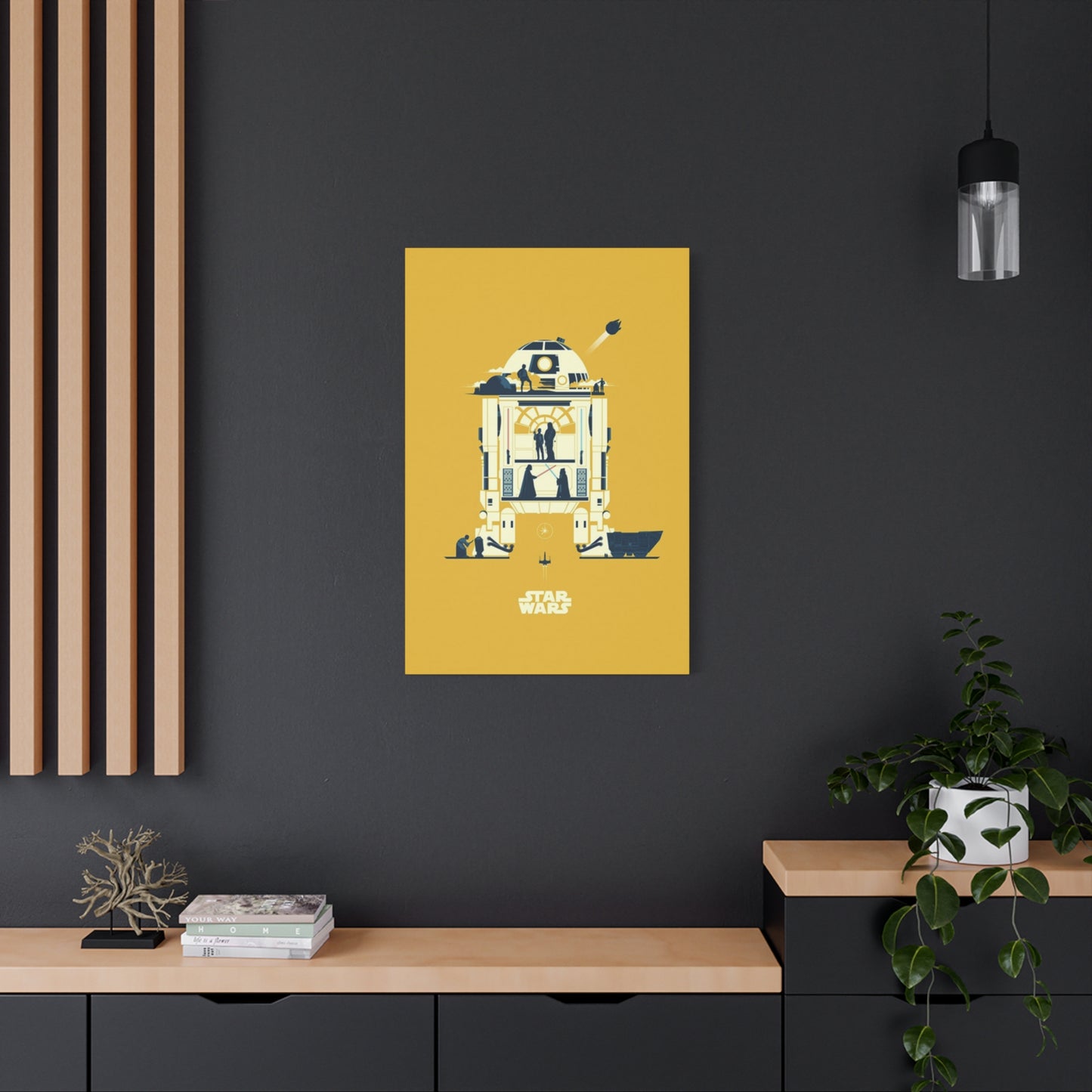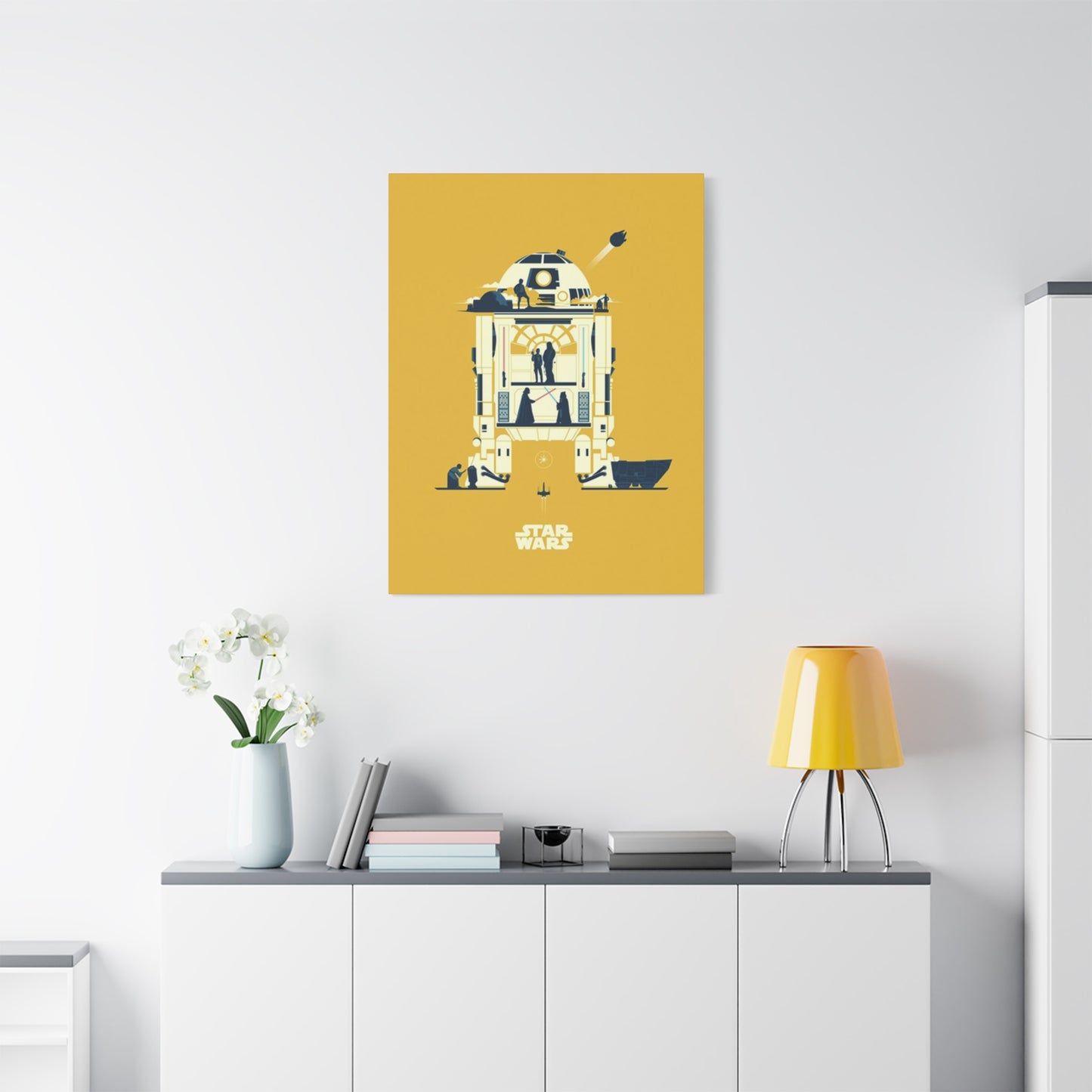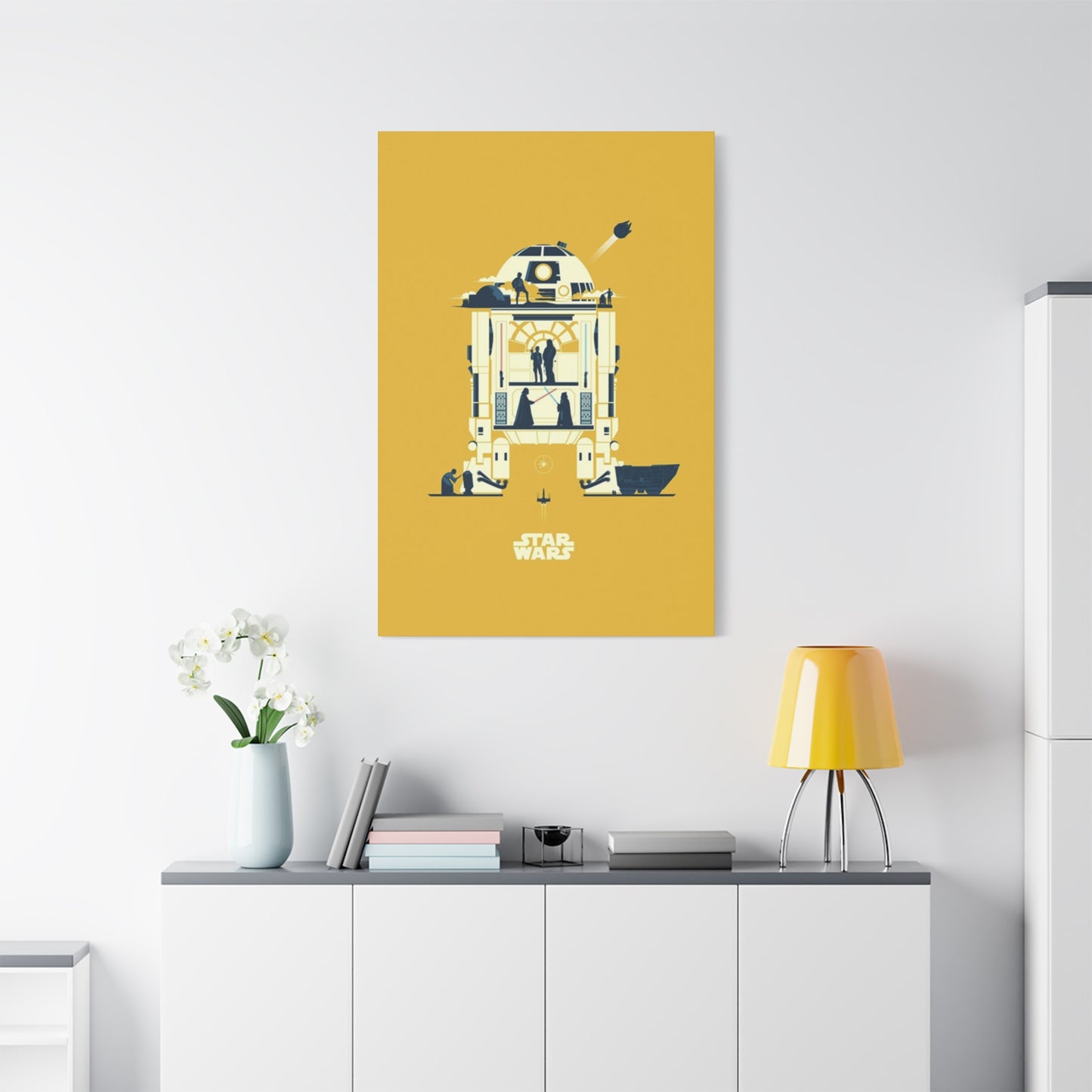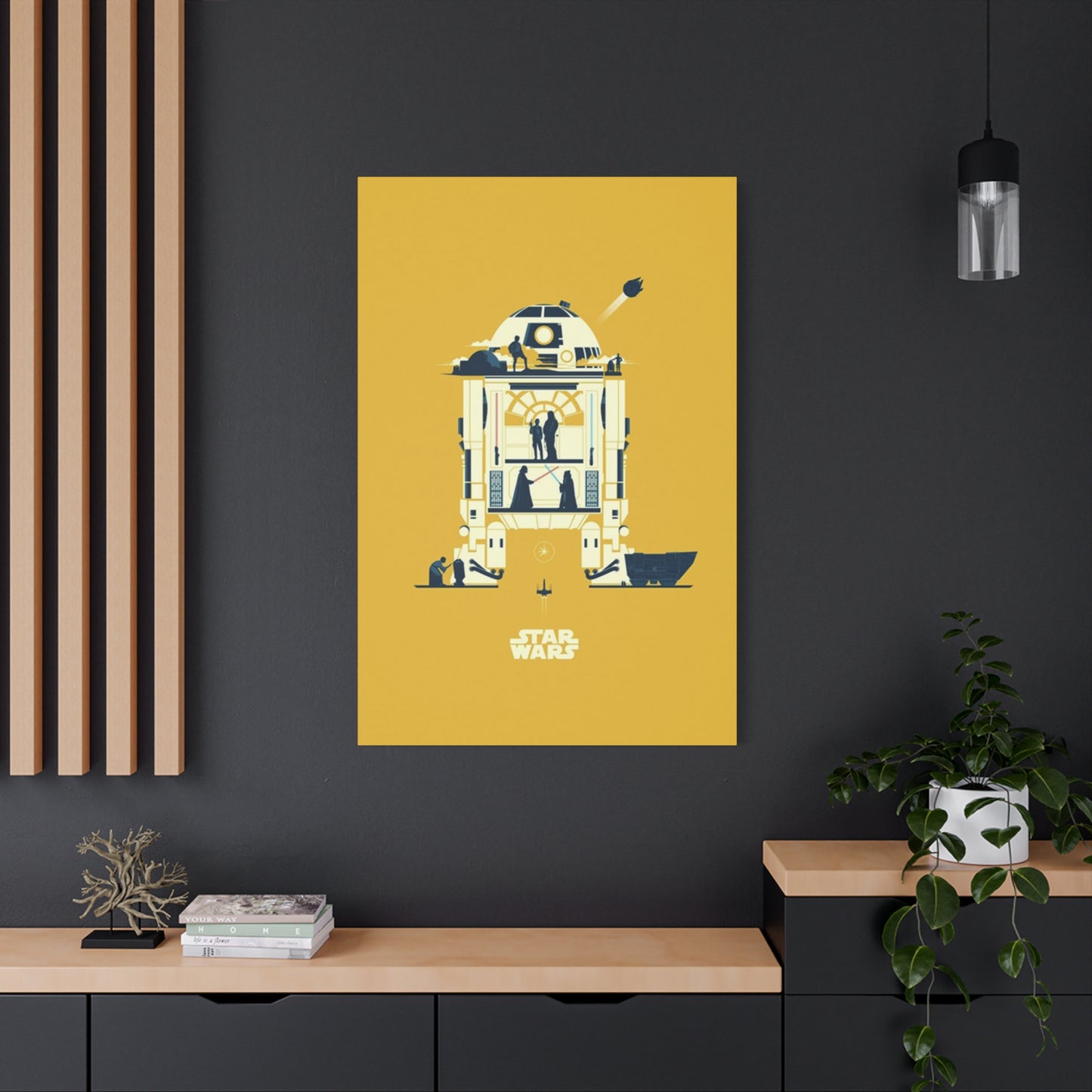The Ultimate Guide to Star Wars Movie Wall Art: From Classic Posters to Modern Prints
The enduring legacy of the galaxy far, away continues to captivate millions of enthusiasts worldwide, inspiring them to bring elements of this iconic universe into their living spaces. Canvas prints featuring scenes, characters, and imagery from the beloved space opera franchise have become increasingly popular among collectors and decorators alike. These artistic pieces serve as more than mere decorations; they represent a connection to stories that have shaped popular culture for decades.
Creating a personalized environment that reflects your passion for this legendary saga involves careful consideration of artwork selection, placement strategies, and overall design cohesion. Whether you're establishing a dedicated entertainment room, enhancing a home office, or adding character to communal living areas, carefully chosen canvas prints can transform ordinary walls into extraordinary displays that celebrate your favorite moments from the epic space fantasy series.
This comprehensive exploration delves into every aspect of incorporating cinema-inspired canvas artwork into your interior design scheme. From understanding different printing techniques and material qualities to mastering arrangement principles and maintenance practices, you'll discover how to curate a visually stunning collection that honors the artistic vision of this groundbreaking franchise while complementing your existing décor.
Exploring the Appeal of Science Fiction Canvas Artwork
The fascination with space opera canvas prints stems from their ability to capture the essence of adventure, heroism, and imagination that defines the franchise. These artistic interpretations range from faithful reproductions of iconic scenes to abstract representations that evoke the atmosphere and themes of the saga. The versatility of canvas as a medium allows for vibrant color reproduction and textural depth that brings these images to life in ways that traditional posters cannot match.
Canvas prints offer several advantages over other wall decoration options. The fabric texture adds dimension and sophistication to images, creating a gallery-quality appearance that elevates any room. Unlike paper-based alternatives, canvas withstands environmental factors better and maintains its visual appeal longer. The material's durability makes it suitable for various locations throughout your home, from high-traffic areas to more secluded spaces designed for relaxation and contemplation.
The emotional connection people develop with these stories makes related artwork particularly meaningful. Displaying scenes from pivotal moments or portraits of beloved characters creates constant reminders of the values, adventures, and relationships that resonate with viewers. This personal significance transforms decorative pieces into conversation starters and reflection points that enrich daily life.
Collectors appreciate how canvas prints bridge the gap between commercial merchandise and fine art. Quality reproductions demonstrate respect for the original cinematography and concept art while making these images accessible for home display. This accessibility has democratized art collection, allowing enthusiasts to build impressive galleries without the prohibitive costs associated with original production materials or limited-edition collectibles.
The variety available in this category accommodates diverse aesthetic preferences and design requirements. Minimalist interpretations featuring silhouettes or simplified compositions appeal to those favoring understated elegance, while detailed battle scenes and vibrant character portraits satisfy fans seeking more dramatic visual impact. This spectrum ensures that every enthusiast can find pieces that align with both their personal taste and their interior design vision.
Understanding Different Canvas Printing Techniques and Quality Standards
The production method significantly influences the final appearance and longevity of canvas artwork. Giclee printing represents the premium standard in reproduction technology, utilizing specialized inkjet printers that deposit microscopic droplets of archival-quality pigment onto canvas material. This technique achieves exceptional color accuracy and detail resolution, reproducing subtle gradations and fine elements that other methods might miss. The resulting prints resist fading for decades when properly cared for, making them worthwhile investments for serious collectors.
Standard digital printing offers a more economical alternative while still producing satisfactory results for casual decorators. These prints use conventional inkjet or laser printing technology with standard inks that, while less permanent than giclee pigments, still provide adequate colorfastness for typical indoor display conditions. Understanding the distinction helps buyers make informed decisions based on their budget constraints and longevity expectations.
Canvas material itself varies in quality and characteristics. Premium cotton canvas provides superior texture and durability compared to synthetic alternatives or cotton-polyester blends. The weave density affects image sharpness, with tighter weaves supporting finer detail reproduction. Heavier canvas weights resist warping and sagging over time, maintaining proper tension on stretcher frames for years without requiring adjustment.
The stretching and mounting process requires skill and precision to achieve professional results. Gallery-wrapped canvases, where the image continues around the frame edges, create a finished appearance that eliminates the need for traditional framing. Museum-wrapped alternatives feature neutral-colored sides that provide a clean, contemporary look. Proper stretching techniques ensure the canvas remains taut without distortion, preserving image proportions and preventing unsightly ripples or bulges.
Protective coating application represents the final step in quality canvas production. Clear acrylic or varnish layers shield the printed surface from dust, moisture, and ultraviolet radiation while enhancing color vibrancy and adding subtle sheen. These coatings vary in finish from matte to glossy, each creating different visual effects. Matte finishes minimize reflections and glare, making them ideal for brightly lit rooms, while glossy coatings intensify colors and add contemporary flair.
Print resolution directly impacts image clarity and professional appearance. High-resolution files containing millions of pixels per square inch reproduce crisp edges and smooth color transitions. Lower resolution sources may exhibit pixelation, banding, or blurriness when enlarged to typical canvas dimensions. Reputable manufacturers source their images from official high-quality files or employ sophisticated upscaling algorithms to maintain acceptable sharpness across various sizes.
Selecting the Perfect Imagery for Your Collection
Choosing specific images requires balancing personal preferences with practical design considerations. Character portraits offer immediate recognition and emotional connection, allowing you to showcase favorite heroes, villains, or supporting figures. These pieces work particularly well as focal points in dedicated entertainment spaces or as part of larger gallery walls where multiple characters can interact visually across separate canvases.
Iconic scenes from memorable moments provide narrative depth that single character images cannot match. Depicting pivotal battles, emotional confrontations, or triumphant celebrations, these compositions tell stories and evoke specific memories associated with viewing experiences. Scene-based artwork often features multiple elements that draw the eye across the canvas, creating dynamic visual interest that commands attention.
Landscape and environment imagery from the franchise showcases the diverse settings that form the backdrop for epic adventures. Desert planets, forest moons, ice worlds, and bustling cityscapes each possess distinct visual characteristics that can influence room atmosphere. These pieces work exceptionally well in spaces where you want to create immersive environments or establish specific moods through color palette and composition.
Vehicle and spacecraft representations appeal to enthusiasts who appreciate the technical and design aspects of the universe. Detailed renderings of starfighters, capital ships, and ground vehicles celebrate the engineering imagination that brings the fictional technology to life. These images often feature dramatic angles and lighting that create compelling compositions even for viewers less familiar with the source material.
Abstract and artistic interpretations offer sophisticated alternatives to direct scene reproduction. Stylized portraits, minimalist designs, and impressionistic treatments provide visual interest while maintaining thematic connections to the franchise. These pieces integrate more seamlessly into eclectic or contemporary interior designs where literal representations might clash with existing aesthetics.
Vintage-style propaganda posters and retro-inspired designs tap into nostalgia while offering unique artistic perspectives. These pieces reinterpret franchise elements through the lens of historical design movements, creating fresh visual experiences that honor both the source material and graphic design heritage. The stylized nature of these works makes them particularly versatile for various decorating schemes.
Typography-focused pieces featuring memorable quotes or iconic terminology provide impact through words rather than imagery. Bold lettering treatments paired with subtle background elements or purely textual compositions create striking visual statements. These designs work especially well in office environments, study areas, or motivational spaces where the message carries as much weight as the visual presentation.
Determining Optimal Canvas Sizes and Dimensions
Size selection significantly affects visual impact and spatial dynamics within a room. Oversized canvases measuring four feet or larger create dramatic focal points that dominate wall space and anchor entire design schemes. These statement pieces work best on expansive walls where they can be viewed from appropriate distances, allowing the composition to be appreciated as a unified whole rather than requiring viewers to scan across sections.
Medium-sized prints ranging from two to three feet accommodate most standard rooms and furniture arrangements. These versatile dimensions provide sufficient presence to be noticed without overwhelming spaces or competing with other design elements. They work equally well as standalone features or as components within larger gallery arrangements where multiple pieces of similar size create cohesive visual rhythm.
Small canvases under two feet excel in supporting roles, filling gaps in existing arrangements or adding accents to unexpected locations. These compact pieces bring thematic consistency to areas where larger artwork would be inappropriate, such as narrow hallways, small bathrooms, or office cubicles. Grouping multiple small canvases creates impact through repetition and arrangement rather than individual size.
Proportion considerations extend beyond absolute dimensions to include aspect ratios that affect how images fit within available wall space. Standard rectangular formats like sixteen-by-twenty or twenty-four-by-thirty-six suit most compositions and coordinate easily with common furniture dimensions. Square canvases offer contemporary appeal and simplify symmetrical arrangements, while panoramic formats create cinematic effects particularly suited to landscape scenes or horizontal action sequences.
Room dimensions dictate appropriate scale relationships between artwork and architecture. The general principle suggests that canvas width should span between one-half and three-quarters of the furniture width beneath it, creating visual balance without appearing either lost on a large wall or crowded in a confined space. Ceiling height influences vertical placement, with centers positioned at average eye level, typically between fifty-seven and sixty inches from the floor.
Viewing distance affects perceived size and detail appreciation. Artwork intended for close inspection in small rooms or hallways can feature intricate details that reward careful examination, while pieces designed for viewing from across large spaces should emphasize bold compositions and strong color contrasts that remain impactful from a distance. Understanding typical traffic patterns and furniture placement helps determine which approach best suits each location.
Multi-panel installations divide single images across multiple canvases, creating contemporary triptych or polyptych arrangements. These configurations add architectural interest through spacing between panels while allowing extremely wide compositions that single canvases cannot accommodate. The gaps between sections create visual rhythm and can be adjusted to fit specific wall dimensions, providing flexibility that monolithic pieces lack.
Mastering Arrangement and Placement Strategies
Strategic placement maximizes the impact of canvas collections while maintaining visual harmony throughout your space. Single statement pieces benefit from centered placement on prominent walls where they serve as undisputed focal points. These locations might include the wall behind a sofa, opposite room entrances, or above mantels and media consoles where attention naturally gravitates.
Gallery wall arrangements combine multiple canvases into cohesive compositions that create impact through collective presence rather than individual size. Successful gallery walls balance uniformity and variety, often mixing different canvas sizes while maintaining consistent spacing or color themes that unify the collection. Planning these arrangements requires measuring available space and creating templates or digital mockups before committing to permanent installation.
Grid layouts impose strict organizational structure by aligning canvases in neat rows and columns with equal spacing. This approach creates contemporary, museum-like presentations that emphasize order and intentionality. Grids work particularly well with series of related images or when displaying multiple canvases of identical dimensions, creating visual rhythm through repetition and alignment.
Asymmetrical arrangements embrace organic, informal organization that feels more relaxed and personalized than rigid grids. These layouts balance visual weight across the composition without requiring perfect symmetry, allowing for creative combinations of different sizes and formats. Success depends on maintaining consistent spacing between pieces and ensuring the overall arrangement remains balanced when viewed as a complete composition.
Vertical stacking creates column arrangements that draw eyes upward, emphasizing ceiling height and creating elegant linear compositions. This approach works particularly well in narrow spaces like hallways or beside doorways where horizontal expansion is limited. Graduating sizes from largest at bottom to smallest at top creates stability, while inverting this arrangement produces more dynamic, unconventional effects.
Horizontal progression spreads canvases across wall width, creating cinematic expanses that emphasize room breadth. These arrangements complement long walls, mantels, or console tables where linear organization matches architectural features. Maintaining consistent vertical alignment creates clean, professional appearances, while varying heights slightly introduces subtle rhythm and movement.
Corner solutions address often-neglected wall junctions by wrapping arrangements around angles, creating three-dimensional displays that activate multiple surfaces. This strategy works particularly well for thematically connected pieces where the physical transition between walls mirrors narrative or compositional flow within the artwork itself. Corner placements require careful consideration of viewing angles to ensure all pieces remain visible from primary traffic patterns.
Salon-style arrangements pack canvases tightly in informal configurations that emphasize abundance and eclecticism. This maximalist approach originated in traditional art galleries where floor-to-ceiling coverage created immersive viewing experiences. Modern interpretations often confine salon arrangements to defined wall sections, creating visual density that contrasts with more minimal surrounding areas while showcasing extensive collections within limited space.
Coordinating Canvas Artwork with Interior Design Styles
Integration with existing décor determines how successfully artwork enhances rather than conflicts with overall aesthetic vision. Contemporary interiors characterized by clean lines, neutral palettes, and minimalist sensibilities benefit from equally restrained artwork selections. Black-and-white compositions, simplified graphics, or monochromatic color schemes maintain the sophisticated simplicity that defines modern design while introducing thematic elements through subject matter rather than elaborate visual treatment.
Traditional spaces featuring classic furniture, rich woods, and ornate details accommodate more elaborate frame treatments and formal presentation styles. While canvas typically presents a contemporary aesthetic through its frameless gallery-wrapped format, adding decorative molding frames creates visual bridges between modern printing techniques and classical design sensibilities. Subject matter featuring architectural elements or historical costume designs reinforces period atmosphere while maintaining franchise connections.
Industrial aesthetics emphasizing exposed materials, metal finishes, and urban edge pair naturally with gritty imagery from franchise locations featuring machinery, weathered technology, or dystopian environments. Rough canvas textures complement concrete and brick surfaces, while metallic frame accents echo industrial hardware and fixtures throughout the space. Vintage-style propaganda posters particularly suit this design direction, providing graphic punch that matches the bold, unrefined character of industrial décor.
Rustic and farmhouse styles centered on natural materials, cozy textures, and lived-in comfort benefit from artwork that emphasizes organic environments and earthy color palettes. Forest moon scenes, desert landscapes, or rural settlement imagery resonate with these design principles while introducing science fiction elements through familiar, comfortable visual language. Wood-framed presentations or floating frame treatments reinforce connections to natural materials and craftsmanship.
Eclectic approaches that blend multiple influences and celebrate personal expression provide maximum flexibility for incorporating diverse artwork selections. These spaces accommodate bold experimentation with color, scale, and subject matter, allowing collections to span various artistic styles and franchise eras without requiring strict visual coordination. The key to successful eclectic integration lies in maintaining some unifying elements, whether color harmony, consistent spacing, or thematic connections that create intentional coherence despite surface variety.
Scandinavian design principles emphasizing functionality, simplicity, and connection to nature favor minimal compositions with substantial negative space. Simple silhouettes, line drawings, or single-color illustrations maintain the uncluttered aesthetic while adding personal significance through subject selection. Light color palettes featuring whites, grays, and soft pastels complement the bright, airy atmosphere typical of Nordic-inspired interiors.
Bohemian environments celebrating color, pattern, and global influences welcome vibrant artwork that contributes to overall visual richness. Saturated hues, complex compositions, and artistic interpretations add to the layered, collected-over-time appearance that defines boho style. Mixing canvas prints with textiles, plants, and decorative objects creates the eclectic abundance characteristic of this free-spirited design approach.
Creating Thematic Rooms and Dedicated Spaces
Establishing environment-specific designs allows for deeper thematic immersion and more cohesive storytelling through spatial composition. Home theaters and media rooms provide natural settings for extensive canvas collections that enhance entertainment experiences. Surrounding viewing areas with imagery from the franchise creates anticipatory atmosphere before screenings while reinforcing thematic connections during viewing sessions. These dedicated entertainment spaces permit bolder, more comprehensive design commitments than shared living areas where diverse preferences must be accommodated.
Gaming rooms and hobby spaces benefit from motivational imagery and character representations that inspire creativity and dedication. Displaying heroes overcoming challenges or teams working together reinforces positive associations with personal pursuits and recreational activities. These environments typically accommodate more saturated colors and dynamic compositions that energize rather than relax, supporting the active engagement these spaces facilitate.
Home offices and study areas require careful balance between personal expression and professional atmosphere. Subtle artwork featuring architectural elements, vehicle designs, or minimalist compositions maintains thematic connections without overwhelming work-focused environments. Inspirational quote-based pieces combine motivational messaging with franchise associations, serving both decorative and functional purposes by reinforcing productivity and perseverance.
Bedroom designs should promote relaxation and personal sanctuary feelings rather than overstimulation. Selecting calmer imagery featuring serene landscapes, contemplative character moments, or gentle color palettes creates soothing atmospheres conducive to rest. Placement above headboards or on walls opposite beds ensures artwork enhances rather than dominates the sleep environment, maintaining the restful character essential to bedroom function.
Children's rooms and play areas welcome more whimsical, colorful interpretations that spark imagination and celebrate the adventure aspects of the franchise. Character-focused pieces featuring beloved droids, creatures, or young heroes create age-appropriate connections to the stories while decorating spaces designed for growth and play. Durable canvas materials withstand the wear typical of youth environments while remaining safe and age-appropriate decorative choices.
Bar and entertainment areas designed for social gathering benefit from conversation-starting pieces that facilitate interaction among guests. Vintage poster designs, humorous interpretations, or iconic scenes provide visual focal points that encourage discussion and shared enthusiasm. These social spaces typically accommodate bolder design choices and higher visual density than private areas, creating stimulating environments that energize gatherings.
Hallways and transitional spaces offer opportunities to extend thematic coherence throughout homes without requiring full room commitments. Smaller canvases or vertical arrangements suit these narrow areas while maintaining visual continuity as residents and guests move between rooms. These connecting spaces provide ideal locations for overflow pieces that complete collections without overcrowding primary living areas.
Understanding Color Psychology and Visual Impact
Color selection profoundly influences emotional response and spatial perception within decorated environments. Cool tones including blues, purples, and greens create calming, spacious feelings that work well in rest areas and contemplative spaces. These hues recede visually, making walls appear farther away and rooms feel larger than they are. Artwork dominated by cool palettes contributes to serene, relaxed atmospheres conducive to unwinding and reflection.
Warm colors such as reds, oranges, and yellows generate energy, excitement, and intimacy. These advancing hues draw attention and create psychological warmth that makes large spaces feel more inviting and comfortable. Action scenes and dramatic moments often feature warm color dominance that translates into stimulating visual presence capable of energizing entertainment areas and social spaces.
Neutral palettes featuring blacks, whites, grays, and earth tones provide versatile foundations that complement existing color schemes without competing for attention. These sophisticated choices integrate seamlessly into various design contexts while allowing subject matter and composition to drive visual interest rather than relying on color intensity. Neutral-based artwork offers flexibility for future décor changes without requiring replacement as surrounding elements evolve.
Monochromatic color schemes using variations of single hues create unified, cohesive appearances that emphasize form and composition over chromatic variety. These approaches work particularly well in minimalist or contemporary settings where restrained color application maintains clean, sophisticated aesthetics. The limited palette focuses attention on tonal variations, lighting effects, and compositional elements that might be overlooked in more colorful treatments.
Complementary color combinations pairing opposites on the color wheel generate maximum contrast and visual vibration that commands attention. These dynamic arrangements create excitement and energy that suit action-oriented imagery and high-traffic social areas. The inherent tension between complementary hues produces striking visual effects that make artwork nearly impossible to ignore.
Analogous color harmonies using adjacent hues create gentle, harmonious relationships that feel naturally coordinated. These pleasing combinations produce sophisticated, gallery-like presentations that demonstrate color awareness while maintaining accessible, comfortable appeal. The subtle variety within analogous schemes provides visual interest without the aggressive contrast characteristic of complementary pairings.
Color temperature balance between warm and cool elements affects perceived room temperature and seasonal appropriateness. Spaces with abundant natural light and warm afternoon sun benefit from cool-toned artwork that provides visual relief from golden light saturation. Conversely, north-facing rooms or those lacking natural illumination gain warmth and vitality from artwork featuring predominantly warm color palettes that compensate for cool ambient conditions.
Exploring Frame and Presentation Options
Frame selection significantly alters artistic presentation and spatial integration. Traditional wood frames create classic, gallery-approved appearances that add formality and permanence to canvas displays. Natural wood tones ranging from light pine to deep walnut provide warmth and organic texture that complement various design styles while creating substantial visual weight that grounds artwork within compositions.
Metal frames offer contemporary, industrial edge that suits modern interiors and urban aesthetics. Sleek profiles in brushed aluminum, matte black, or polished silver create clean, architectural presentations that emphasize image content rather than decorative embellishment. These minimal surrounds work particularly well with simplified graphics and modern compositions where traditional frame elaboration would conflict with artistic intent.
Floating frames create dimensional depth by suspending canvases within open frame structures that leave gaps between artwork edges and frame boundaries. This contemporary presentation technique adds architectural interest while emphasizing canvas as three-dimensional object rather than flat picture. The shadow gaps created by floating arrangements introduce subtle depth perception that enlivens wall presentations.
Frameless gallery wrapping eliminates borders entirely, allowing printed images to extend around canvas edges for seamless, contemporary appearances. This approach maximizes image visibility while creating clean, modern aesthetics that suit minimalist interiors. Gallery-wrapped pieces mount directly to walls without additional framing, simplifying installation while reducing overall visual weight.
Shadow box presentations position canvases forward from wall surfaces, creating pronounced depth that adds dramatic dimension to displays. These elevated mounting systems cast shadows that change throughout the day as lighting shifts, introducing dynamic elements that keep presentations visually interesting. Shadow boxes work particularly well with three-dimensional elements or layered compositions where physical depth reinforces compositional perspective.
Acrylic face mounting encases canvases beneath clear acrylic panels that create glossy, high-impact presentations with exceptional depth and color saturation. This premium treatment protects artwork while intensifying visual punch through light refraction properties that make colors appear more vivid. The substantial weight and contemporary appearance suit modern interiors where investment in presentation quality matches commitment to image content.
Ornate decorative frames featuring carved details, gilded finishes, or elaborate molding patterns create traditional, museum-quality presentations that add significant visual presence. These substantial surrounds work best with formal interiors and classic design schemes where frame ornamentation complements rather than conflicts with architectural details. The substantial investment required for quality decorative frames reflects their role as permanent installation elements rather than temporary decorative touches.
Implementing Proper Lighting Techniques
Illumination profoundly affects artwork appearance and viewer experience. Natural light provides ideal color rendering but requires careful management to prevent damage from ultraviolet radiation and heat accumulation. Positioning canvases perpendicular to windows rather than directly opposite minimizes direct sun exposure while maintaining ambient illumination benefits. UV-filtering window treatments and protective canvas coatings further reduce light-related degradation risks.
Picture lights mounted directly to frames or walls above artwork create focused illumination that highlights specific pieces while adding sophistication to presentations. These dedicated fixtures ensure consistent visibility regardless of ambient conditions while creating evening drama that transforms artwork into glowing focal points. Adjustable beam angles allow customization to suit various canvas sizes and viewing distances.
Track lighting systems provide flexible illumination solutions that adapt as collections evolve. Adjustable fixtures slide along mounted rails to accommodate different artwork positions and sizes without requiring new electrical installations. This adaptability suits dynamic collections where pieces rotate regularly or rooms where furniture arrangements change periodically, requiring corresponding lighting adjustments.
Recessed spotlights installed in ceilings create clean, architectural lighting that avoids the visual clutter of exposed fixtures while providing effective artwork illumination. These permanent installations require planning during construction or renovation but deliver superior aesthetic integration and professional gallery-quality results. Proper positioning ensures even coverage without creating hot spots or shadows that compromise viewing quality.
Accent lighting using wall-mounted fixtures or small spotlights emphasizes specific collection pieces while creating ambient background glow that enhances overall room atmosphere. This layered approach to illumination provides both functional task lighting for artwork appreciation and mood lighting that contributes to evening environment creation. Dimmer controls allow adjustment to suit various activities and times of day.
LED technology offers energy-efficient illumination with minimal heat generation and extended lifespan that reduces maintenance requirements. Color-corrected LEDs reproduce natural light qualities that render artwork colors accurately without the warm yellow cast characteristic of incandescent bulbs or the cool blue tint of some fluorescent sources. The negligible heat output protects canvases from thermal damage that can occur with traditional halogen spotlights.
Backlighting creates dramatic halo effects by positioning light sources behind canvases, emphasizing silhouettes and creating contemporary presentations with striking visual impact. This technique works particularly well with darker compositions where rim lighting creates dramatic contrast between illuminated edges and shadowed centers. Backlit presentations transform artwork into light features that contribute to overall room illumination rather than merely reflecting it.
Installing Canvas Artwork Safely and Securely
Proper mounting ensures artwork remains safely displayed while preventing wall damage or canvas deterioration. Wall composition determines appropriate hardware selection and installation techniques. Drywall requires anchors that distribute weight across larger areas than simple nails can support, with toggle bolts or molly bolts providing secure attachment for heavier canvases. Lighter pieces may use standard picture hangers with anchoring wings that embed behind drywall surfaces.
Stud mounting provides maximum security by attaching directly to structural framing members rather than relying solely on drywall strength. Electronic stud finders locate wood or metal framing concealed behind finished surfaces, allowing precise hardware placement into solid backing. This approach supports even extremely heavy canvases without risk of detachment or wall damage, though it requires more extensive preparation than simple hanging techniques.
Masonry walls including brick, concrete, or stone require specialized hardware designed to penetrate and anchor within hard materials. Masonry screws or expansion anchors provide secure attachment without the elaborate drilling required for traditional masonry bolts. Carbide-tipped drill bits cut through hard surfaces efficiently while minimizing dust generation and physical effort during installation.
Picture hanging systems using wall-mounted rails and adjustable cables offer premium installation solutions that eliminate wall damage while providing exceptional flexibility. Artwork hangs from nearly invisible cables that adjust vertically without tools, allowing effortless repositioning and collection rotation. These systems appeal to renters or frequent redecorators who want to avoid permanent wall modifications while maintaining professional presentation standards.
Weight distribution considerations affect hardware selection and placement. Canvases hanging from single points concentrate stress at individual locations, potentially causing hardware failure or canvas distortion over time. Two-point hanging systems distribute weight more evenly while allowing level adjustment to correct any tilting. Heavier pieces benefit from French cleat mounting systems that spread weight across entire top edges while providing extremely secure, stable support.
Sawtooth hangers pre-attached to canvas frames offer simple installation requiring only single nails or screws to support. These lightweight solutions work well for smaller pieces but may prove inadequate for heavier canvases where more robust hanging systems prevent drooping or detachment. Checking manufacturer specifications ensures selected canvases include appropriate hanging hardware for their dimensions and weight.
Wire hanging systems allow flexible positioning while distributing weight across two mounting points. D-rings or eye screws attach to frame sides or back, supporting wire that wraps around single wall hooks. Adjusting wire length changes hanging height without relocating wall hardware, providing convenient flexibility. Proper wire tension prevents excessive sagging that creates unbalanced appearances or stresses attachment points.
Professional installation services provide expertise and equipment that ensure perfect results without risks associated with improper mounting. Experienced installers assess wall conditions, select appropriate hardware, achieve precise leveling, and guarantee secure attachment that protects both artwork and architectural surfaces. For valuable collections or challenging installations, professional services justify their costs through superior outcomes and eliminated risks.
Maintaining and Caring for Canvas Artwork
Regular maintenance preserves appearance and extends lifespan of canvas collections. Dust accumulation dulls colors and creates textured buildup that degrades visual quality over time. Gentle dusting using soft, dry microfiber cloths removes surface particles without abrading protective coatings or canvas fibers. Feather dusters prove less effective as they redistribute rather than capture dust, potentially grinding particles against surfaces.
Deep cleaning addresses accumulated grime that regular dusting cannot remove. Slightly dampened cloths wrung nearly dry prevent water saturation that might damage canvas or inks while allowing gentle removal of stubborn residue. Cleaning motions should be light and follow straight paths rather than circular patterns that might create visible wear patterns. Always test cleaning methods on inconspicuous areas before addressing entire surfaces to ensure no adverse reactions occur.
Protective sprays designed specifically for canvas artwork add additional barriers against dust, moisture, and ultraviolet exposure. These treatments require reapplication according to manufacturer schedules but significantly extend time between cleanings while providing enhanced protection. Following product instructions precisely prevents over-application that might alter surface appearance or create uneven protective coverage.
Environmental control maintains stable conditions that prevent canvas deterioration. Extreme temperature fluctuations and humidity variations cause expansion and contraction cycles that stress canvas fibers and mounting materials, potentially creating warping or loosening over time. Maintaining relative humidity between forty and sixty percent with minimal temperature swings preserves structural integrity and visual quality indefinitely.
Direct sunlight exposure represents the primary threat to canvas longevity. Ultraviolet radiation breaks down organic materials and fades pigments over time, with damage occurring gradually but irreversibly. Positioning artwork away from direct sun paths, using UV-filtering window treatments, and applying protective canvas coatings all mitigate but cannot completely eliminate photodegradation. Rotating displayed pieces prevents uneven fading within collections.
Handling precautions prevent accidental damage during cleaning, relocation, or adjustment. Always support canvases from frame edges rather than touching printed surfaces where oils and residues from skin contact accumulate. When moving pieces, secure loose hanging hardware and maintain upright orientation to prevent stress on mounting points or frame joints. Multiple-person handling of large canvases prevents accidents and ensures controlled movement.
Storage considerations apply when rotating collections or temporarily removing pieces. Canvas should remain upright rather than stacked flat, as weight compression may create permanent indentations or creases. Protective coverings shield stored artwork from dust and accidental contact without creating sealed environments where moisture might accumulate. Climate-controlled storage areas with moderate temperature and humidity prevent environmental damage during extended periods of non-display.
Damage assessment and repair decisions require careful consideration. Minor surface dirt often responds to appropriate cleaning techniques, while structural issues like tears, loosening from frames, or sagging may require professional restoration services. Attempting repairs without proper training risks causing additional damage that proves more extensive and costly to remedy. When in doubt, consulting conservation professionals ensures appropriate treatment approaches.
Building Cohesive Collections Over Time
Collection development involves strategic acquisition that creates unified presentations while reflecting personal priorities. Starting with favorite characters or most meaningful scenes establishes core foundation pieces that define collection direction. These anchor works guide subsequent selections by establishing aesthetic parameters and thematic focus that create intentional coherence rather than random accumulation.
Series and set selections provide built-in coordination by grouping related images designed to display together. Character triptychs, sequential scene progressions, or thematic collections featuring similar artistic treatments create instant cohesion that simplifies arrangement decisions. These curated groupings eliminate guesswork about visual compatibility while often providing cost advantages through bundled pricing.
Completing phases gradually allows spreading investment over time while maintaining flexibility as tastes evolve and available options expand. Starting with single statement pieces or small groupings provides immediate satisfaction while leaving room for growth. This incremental approach prevents overwhelming spaces with excessive imagery while allowing natural development that mirrors deepening appreciation and changing preferences.
Mixing eras and artistic styles within franchise history creates diverse collections that celebrate continuity and evolution. Combining imagery from original trilogy, prequel series, and contemporary additions demonstrates comprehensive appreciation while creating visual variety that keeps collections interesting. Different artistic interpretations of familiar elements add depth and demonstrate engagement with multiple aspects of the franchise creative output.
Balancing iconic and obscure content creates collections that satisfy both accessibility and insider knowledge. Widely recognized images provide immediate connection points for visitors while deeper cuts reward dedicated fans who appreciate less obvious references. This balance makes collections welcoming yet sophisticated, avoiding either pretension or superficiality.
Seasonal rotation maintains freshness within finite display space while extending collection enjoyment. Alternating displayed pieces prevents habituation that causes even beloved artwork to fade into background unnoticed. This practice allows building larger collections than available wall space would otherwise accommodate while ensuring all pieces receive regular exhibition.
Budget management enables sustainable collection growth without financial stress. Setting acquisition budgets and prioritizing purchases prevents impulsive decisions that strain resources or result in lower-quality pieces that disappoint. Watching for sales, considering print-on-demand services, and accepting that collections develop gradually rather than instantaneously all contribute to satisfying, financially responsible collecting.
Documentation through photography and inventory tracking preserves collection history while supporting insurance and estate planning needs. Recording purchase dates, sources, and prices creates valuable references for replacement or expansion decisions. Digital catalogs allow visualizing entire collections and planning arrangements before physical installation, reducing trial-and-error hanging efforts.
Addressing Common Installation Challenges
Uneven walls and surface irregularities complicate achieving perfect leveling and proper spacing. Using longer levels that span multiple mounting points ensures accuracy despite localized wall variations. Shimming behind frames compensates for walls that lean or bow, preventing canvases from tilting forward or sitting unevenly against surfaces. Plumb lines establish true vertical references when walls themselves prove unreliable.
Rental restrictions limiting wall modifications require creative solutions that avoid permanent alterations. Removable adhesive strips rated for appropriate weights provide damage-free hanging solutions that leave walls pristine upon removal. Leaning large canvases on mantels, shelves, or floor surfaces creates intentional casual presentations that bypass wall mounting entirely while maintaining visual impact. Freestanding easels traditionally associated with painting displays adapt easily to canvas exhibitions.
Textured wall surfaces including knockdown, orange peel, or popcorn finishes prevent flush mounting and may damage when hardware penetrates irregular surfaces. Foam mounting squares provide cushioning that accommodates texture variations while distributing weight across larger areas. Accepting small gaps between wall and canvas becomes necessary with pronounced textures, or removing texture from specific mounting areas creates smooth mounting zones without requiring complete wall refinishing.
Low ceilings limit vertical hanging options and require careful scale consideration. Oversized canvases may overwhelm rooms with insufficient vertical space, making medium or small-scale pieces more appropriate. Horizontal orientation preferences over vertical arrangements maximize impact within constrained heights. Positioning artwork slightly lower than standard eye-level recommendations prevents pieces from appearing cramped against ceilings.
Awkward architectural features including thermostats, electrical panels, or vents create obstacles that complicate ideal placement. Creative arrangements that integrate rather than ignore these elements turn challenges into design opportunities. Asymmetrical groupings can balance around unavoidable features while custom spacing accommodates protrusions. Disguising functional elements behind strategically positioned canvases solves aesthetic problems when allowed by access requirements and safety codes.
Multiple competing focal points within single rooms require hierarchical design thinking that establishes primary and secondary interest areas. Anchor spaces with dominant artwork arrangements that command attention while subsidiary pieces support without overwhelming. Color coordination and stylistic consistency between competing elements reduce visual conflict that fragments attention and creates chaotic impressions.
Furniture placement conflicts arise when seating arrangements or storage needs interfere with ideal artwork positions. Solving these puzzles requires compromising between optimal viewing angles and functional room usage. Sometimes relocating furniture slightly or selecting different canvas sizes provides better solutions than forcing inappropriate artwork into problematic locations. Flexibility and willingness to experiment lead to surprising solutions that satisfy both practical and aesthetic requirements.
Incorporating Technology and Interactive Elements
Digital displays offer dynamic alternatives to static canvases through screens that rotate between images or display moving content. These technological solutions suit dedicated entertainment spaces where electronic integration feels appropriate while allowing unlimited variety within fixed frames. Programming displays to coordinate with viewing content or seasonal themes adds interactive dimensions impossible with traditional artwork.
Augmented reality applications overlay digital content onto physical environments when viewed through smartphone or tablet cameras. These emerging technologies allow traditional canvases to trigger supplemental content including character information, scene context, or related imagery that deepens engagement. While still developing, AR integration represents future directions where physical and digital presentations merge into hybrid experiences.
Final Thoughts
Star Wars movie wall art is more than just a way to decorate—it’s a celebration of a cultural phenomenon that has shaped generations of fans. Whether you’re drawn to the nostalgia of classic posters or captivated by the dynamic appeal of modern prints, Star Wars art allows you to bring the epic saga into your space in a way that is both visually stunning and emotionally resonant. From the very first A New Hope to the most recent additions to the franchise, each piece of Star Wars wall art carries with it aa piece of cinematic history, and choosing the right one for your space can turn a room into a personal tribute to the galaxy far, far away.
The beauty of Star Wars movie wall art is its versatility. Classic posters from the original trilogy hold a special place in the hearts of long-time fans, offering a sense of nostalgia for a time when the world was first introduced to iconic characters like Luke Skywalker, Princess Leia, and Darth Vader. These vintage posters often feature bold, hand-painted artwork that evokes a sense of adventure and drama, making them perfect for creating a retro-inspired Star Wars corner in your home. The warm, rich colors, exaggerated poses, and dynamic compositions of these classic designs are not only a nod to the history of Star Wars but also serve as timeless pieces of art.
On the other hand, modern prints capture the evolution of the Star Wars universe, reflecting the latest films, TV shows, and characters with a fresh, contemporary style. These prints tend to incorporate sleek, clean lines, digital effects, and minimalist design elements, offering a more modern and sophisticated way to celebrate the franchise. Whether you’re showcasing a dramatic, action-packed battle scene from The Mandalorian or a stylized representation of Rey’s journey in The Rise of Skywalker, modern Star Wars prints bring a dynamic energy to any space. Their ability to blend futuristic aesthetics with classic storytelling ensures that these pieces remain relevant to both new and old fans alike.
When it comes to displaying your Star Wars movie wall art, the possibilities are endless. For fans who want to immerse themselves in the entire saga, creating a wall dedicated to different eras and films is a fantastic way to showcase the breadth of Star Wars history. From the original trilogy to the prequels, sequels, and standalone films like Rogue One and Solo, each movie has its own unique visual style, characters, and iconic moments. By mixing and matching posters and prints from different periods, you can build a rich visual narrative that spans across time and space, capturing the evolution of the galaxy far, far away.
Alternatively, if you prefer a more cohesive and streamlined look, focusing on a single theme or design style can help create a unified, sophisticated atmosphere. For example, a wall of minimalist prints featuring key characters, ships, or symbols from Star Wars offers a sleek, modern take on the franchise. You could choose monochromatic or metallic prints to match your existing decor, subtly incorporating Star Wars into your space without overpowering it. This approach allows you to keep the essence of Star Wars present while maintaining an elegant, understated aesthetic.
Another fantastic option is to blend both classic and modern Star Wars art. Imagine framing a vintage Star Wars poster from the 1970s alongside a contemporary, graphic print of The Mandalorian or Kylo Ren in your living room. The combination of the old and new speaks to the enduring appeal of the saga and creates a balanced, eclectic atmosphere that honors both the history of Star Wars and its modern-day resurgence.
No matter which direction you choose, Star Wars movie wall art has the power to transform any room into a personal, immersive space. It invites you to reconnect with the characters, stories, and themes that have captured hearts across generations. From epic battles to heartfelt moments, these pieces bring the magic of Star Wars to life in your home.
In conclusion, Star Wars movie wall art is the perfect way to infuse your space with the adventure, excitement, and timeless appeal of the Star Wars universe. Whether you opt for classic posters, modern prints, or a fusion of both, the art allows you to express your love for the saga while transforming your home into a galactic haven. As the Star Wars story continues to unfold, these pieces will forever serve as a reminder of the legacy, the characters, and the moments that make Star Wars an enduring part of popular culture.

















